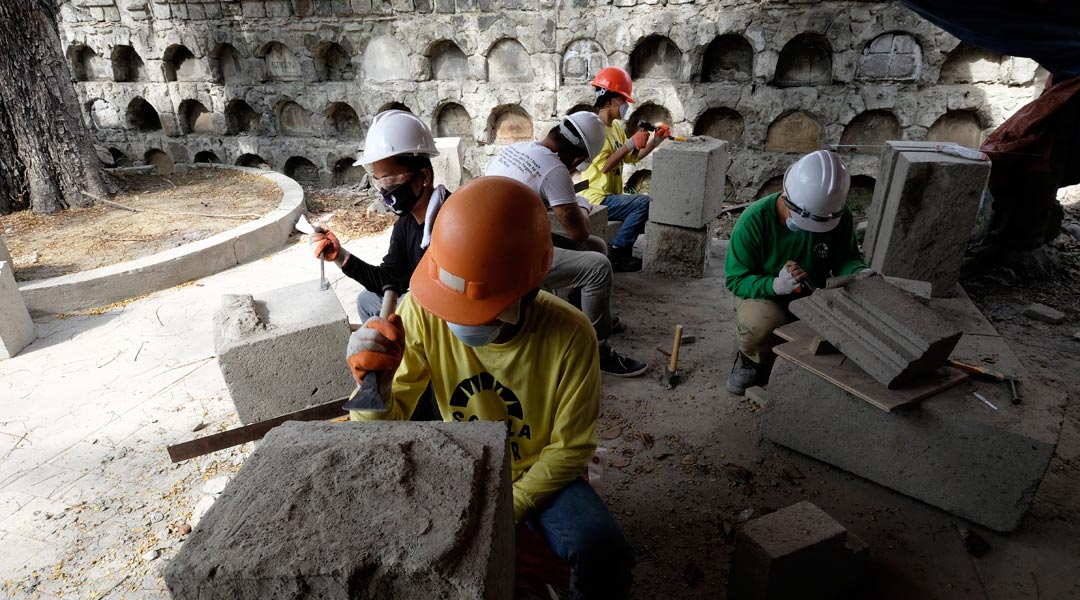
Out-of-school youth turned masons tasked to conserve Paco Park
The usual suspects of students practicing for group presentations sauntered across Paco Park’s central garden that February afternoon we visited. Unknown to them, another set of bright-eyed Manileños by the perimeter walls of the circular fortress were also practicing for school. A team of 20 hard hats from Escuela Taller, composed of nine students and 11 graduates, were restoring the ossuary of Manila’s former municipal cemetery.
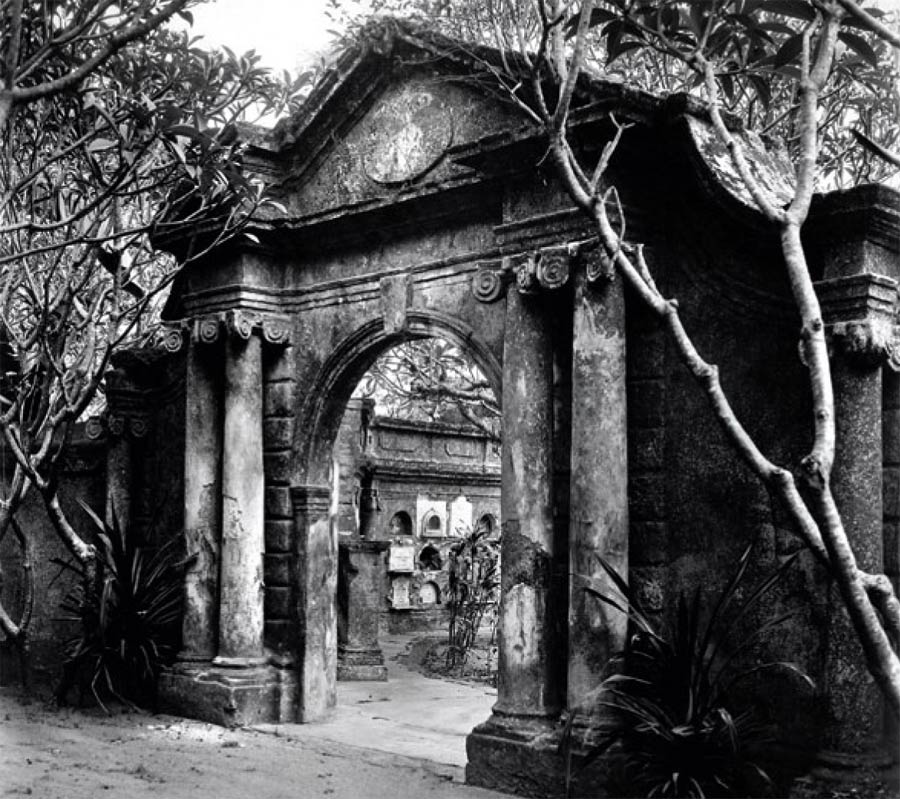
Built by Spanish friars of the Dominican order in 1822, the 4100-square-meter Paco Park was meant to be the resting place of Intramuros’ dearly departed. Five tiers of burial niches (three levels remain visible today due to flooding) contained the remains of cholera victims of the early 1800s, high society in the late 1800s, and four national heroes after their executions: the Gomburza priests and José Rizal, whose remains were moved to Luneta. Internments were ceased in 1912 and the Paco structure was declared a national park in 1966.
Escuela Taller is a technical consultant for the National Parks Development Committee’s (NPDC) P12-million conservation program which began in 2015. The Spanish government even turned over a copy of the park’s original plans from their national archives. Escuela Taller’s conservation of the ossuary, located right behind the St. Pancratius Chapel on the northeast edge of the park, will serve as a demo for the contractors NPDC hired for the entire project.
READ MORE: Augusto Villalon: gentleman hippie and heritage radical
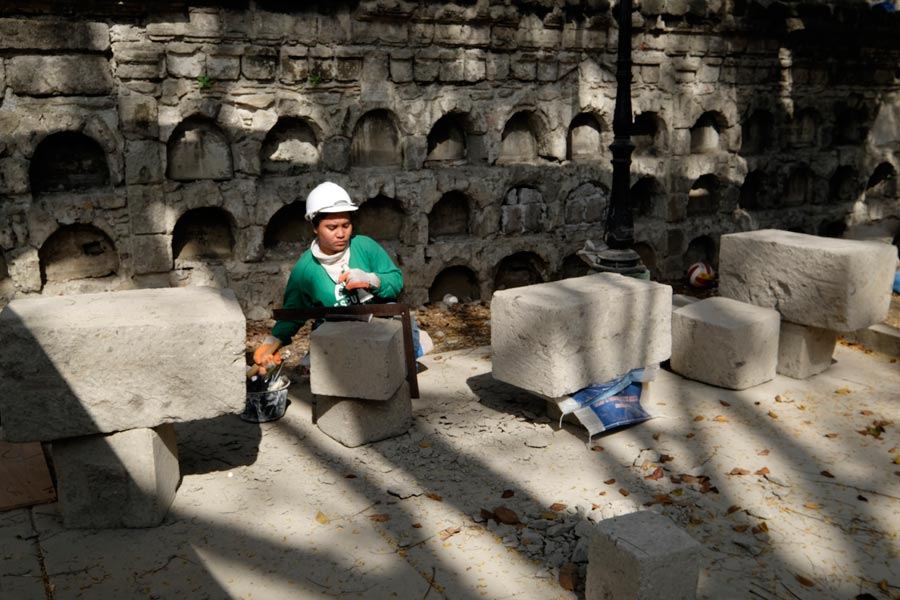
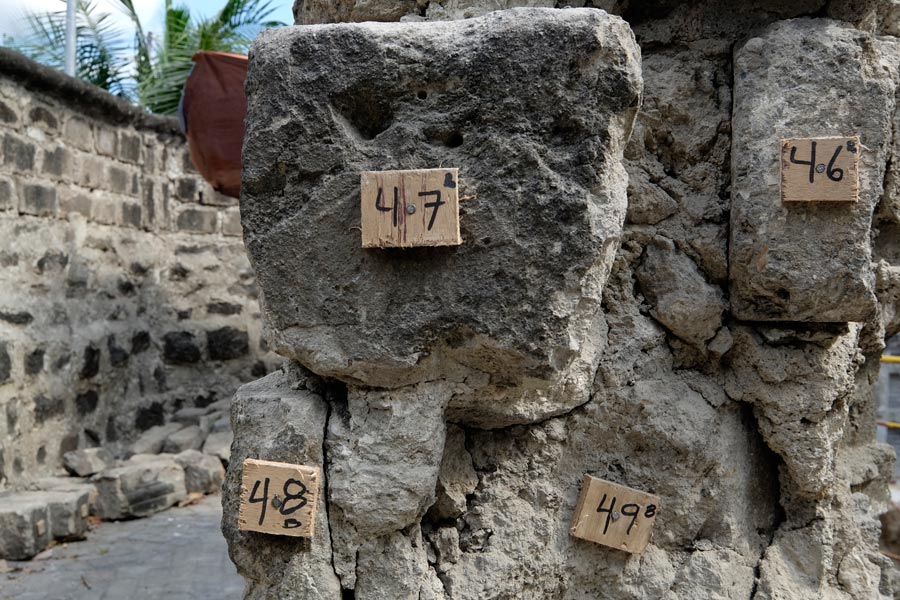
Documentation began in September 2017 and the conservation work began a month later. The faulty walls were disassembled, with each adobe block assessed for damage, documented, and marked with a number relating to where it was originally on the elevation.
Conservation architect Jeffrey Cobilla describes the documentation period as “full of discoveries.” Hollow blocks and pebble wash infill, quick fixes from past interventions, were damaging the ossuary. The team needed to replace about 40 percent of all the blocks, which meant refashioning new adobe stones to fit the compromised spots. Another discovery, from corroborating plans and old photos, was that the three-skull stone tableau you see upon entering the ossuary gate originally had six skulls.
The project was expected to wrap up last March 2018. However, the team found that the outer wall of the ossuary is also unstable, extending the work to Escuela Taller’s August graduation. Repairing this is crucial as the finished work in the inner wall may all come to naught if the outer wall collapses.
READ MORE: Unfinished, award-winning Spanish architecture pavilion, now in Manila
The irony with Spanish colonial structures, like Paco Park, is that our government, not knowing any better at the time, overturned measures that the original builders installed to protect the stone walls. In the 1970s, there was a nationwide effort to strip these buildings of their plaster and paint. This hastened the degradation of the adobe which, after being insulated by paint for over a hundred years, suddenly became exposed to the elements. The material is so porous that even water vapor damages it.
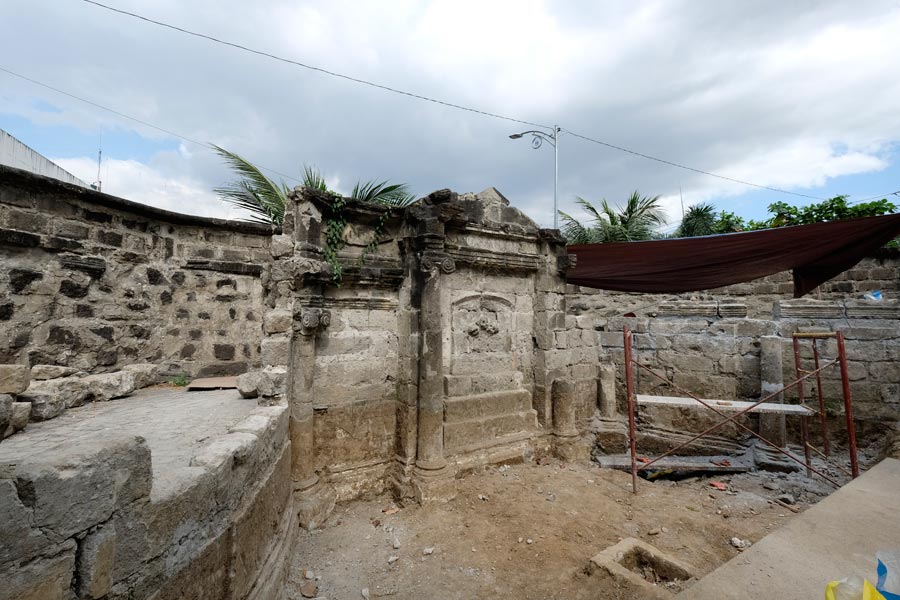
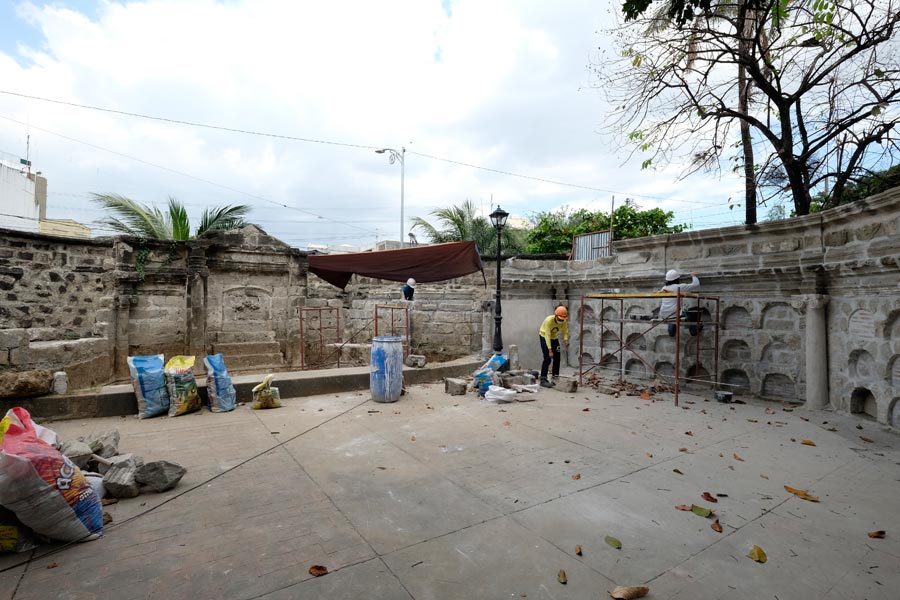
Many today may find it jarring to enter a pastel-colored cemetery, but paint pigments Escuela Taller found on the Paco Park adobe show that the walls were once salmon pink, yellow ochre, and white. Cobilla shared: “Antiquity is romanticized in a way na dapat luma (it should look old), raw, decaying, but in fact our heritage was actually very colorful.”Although the Escuela Taller team does not plan to revive the park’s pink and yellow glory, they will cover all the stones they set with a “sacrificial layer” of plaster and lime wash.
Even more compelling is how the former out-of- school youth from indigent families in places like Tondo and Baseco have become the unlikely custodians of our heritage. They, who have lived lives with makeshift roofs overhead, are making sure that our old churches, fortresses, watchtowers, and old mansions are structurally sound. They, who felt like society could care less about them, are making sure that the country’s main defense against despotism—our collective memory—can reverberate in history through meaningful places like the Paco Park.
READ MORE: What was Vigan like before the UNESCO Heritage fame?
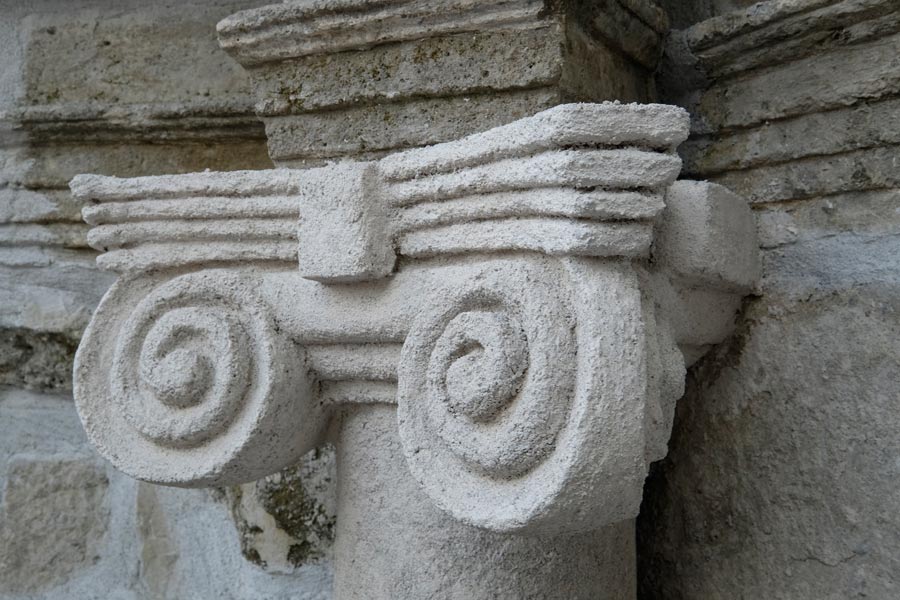
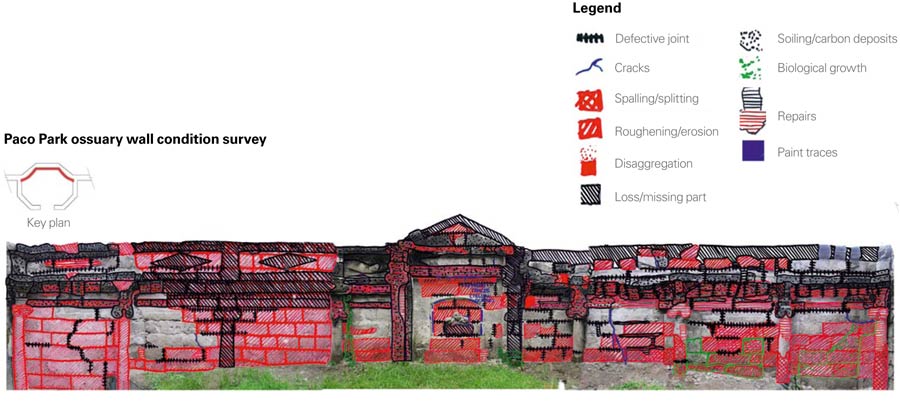
Christian Edward from Intramuros graduated from the school in 2012 and made his way from being a trainee in the Malate Church project to foreman for the Paco Park ossuary. He tells us that he initially just wanted to earn his training certificate in order to apply for work abroad. But six years of working with Escuela Taller grew his love for this vocation.
“Kailangan ko gawin ang best ko, kasi pangmatagalan ito. Aalagaan mo dapat ang buhay ng bato. Iba kasi ang historical site. Kapag natapos mo at balikan mo: proud ka ikaw ang gumawa,” the foreman shared. (“I need to do my best because this park is long lasting. We prepare the stones for longevity. Historical sites are something else. When you finish the project and revisit it, you feel proud of the work you put in.”)
Christian’s point was incarnated when the Carriedos, a family of old Manila society, visited the ossuary to look for a niche. With most grave markers already gone, it would have been an unfruitful hunt. But with the help of the team, the descendants were able to locate the remains of their ancestor. We visit Paco Park for different reasons: to recall history, go to mass, enjoy a concert, or simply stroll in the shade of its antique trees. Escuela Taller will make sure that its stones can continue to tell our stories. ![]()
This article first appeared in BluPrint Vol 2 2018. Edits were made for Bluprint online.
Photographed by Ed Simon


